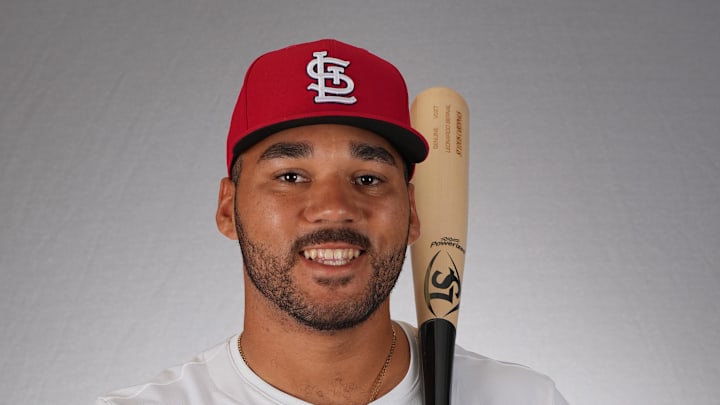*The following article is meant to be an informative piece and is in no way investment or financial advice and does not necessarily reflect the views of the author, Redbird Rants, or FanSided*
St. Louis Cardinals catching prospect Leonardo Bernal has been working through the minor leagues since coming to the organization as a 16-year-old international free agent in 2021. According to the most recent top-30 team prospect lists according to Baseball America, the switch-hitting catcher currently slots in as the Cardinals' #12 prospect in an organization full of catching depth at the minor league level.
Leonardo Bernal is featured alongside Guardians' closer Emmanuel Clase in a new way to invest in an athlete's future potential
The Cardinals were applauded for their ability to recognize and sign Bernal out of Panama, where fellow backstop and potential starter Ivan Herrera was signed from. Bernal rose to international "fame" after playing in the Little League World Series and the Under-15 World Cup. During his signing period, the catcher was seen as the top prospect coming out of Panama that season and the Cardinals rewarded him with a $680,000 signing bonus.
Since his signing, the now-20-year-old has received above-average future grades for his hitting and fielding tools. In his minor league career, Bernal has shown his ability to hit for a consistent average from either side of the plate, but his power potential is greater from the left side where he has hit 19 of his 26 career homers. With the depth behind the dish that the Cardinals have throughout their system, there is no need for them to rush Bernal to the upper levels and seem comfortable letting him hone in all aspects of his game against similar-aged talent. To this point, he has spent all but 14 games at the A-level. Those 14 games were spent in Double-A Springfield, where the youngster struggled to a .204 batting average but still showed solid plate discipline in that limited sample size. Bernal is expected to begin the year battling catching prospect Jimmy Crooks for the starting gig in Memphis, with the former most likely to start the season in Springfield.
With those promising results as a catcher competing against players four years older than Bernal, the switch hitter found himself ranked among the organization's top prospects with Baseball America most recently ranking him as 12th in the system and FanGraphs having him sixth in their 2024 updated rankings. While he is still years away from the majors, Bernal and his management team are working on his game and how he can best reach the potential that made the Cardinals sign him from Panama as a teen.
Enter Finlete.
STL Today columnist Benjamin Hochman wrote about Finlete and the connection with the catching prospect. The idea behind this company is to provide fans with a new level of involvement with professional athletes beyond watching them from the stands or seeing them at a scheduled event. Finlete works by assigning a value to the player in the form of shares (like a company would) that fans can choose to purchase. Bernal, for example, is currently "listed" at $2 per share while someone with career success like Guardians' closer Emmanuel Clase is listed at $15 per share.
What type of returns do the investors and Bernal receive?
For your investment, which is currently sitting at a minimum of $300 or 150 shares, you have the potential to receive a return based on Bernal's future major-league earnings. The website then provides an example so investors can see what this means. They show that, if the catcher were to have a big league career similar to that of Elias Diaz, the initial $300 investment would be worth over $500. What if Bernal performs similarly to say Cardinal legend Yadier Molina? Well then that $300 has the potential to be worth almost $6,000!
So while the fan can potentially profit, why would Bernal commit to giving some of his potential millions away? The answer is simple. To receive more resources (money) to use now to help him reach the major leagues. Finlete explains that the money goes to the player, who then uses those finances to pay for new coaches, technology, or training aids. Simply put, the more money Bernal receives, the better chance he has at making the Major Leagues, which means a better chance of the investor receiving a return. The risk? Well, if Bernal never makes it to the majors, there is no return on investment for the fan.
Major League Baseball and its players have been working on ways to "grow the game" and those ideas have ranged from shortening games to having star players mic'd up during broadcasts. While that has been successful in bringing some fans back in after a downturn in attendance post-COVID, the potential for fans to root on their favorite players and have a role in their success could bring new excitement toward the future of the league.
